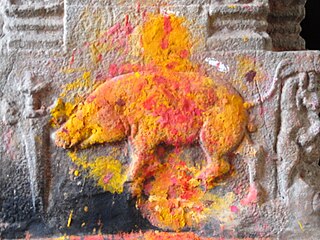 W
WThe wild boar and boar's head are common charges in heraldry.
 W
WThe Bataillon de Chasseurs Ardennais is an infantry formation in the Land Component of the Belgian Armed Forces. The unit, currently at battalion strength, is a part of the Motorized Brigade.
 W
WClan Campbell is a Highland Scottish clan. Historically one of the largest and most powerful of the Highland clans, their lands were in Argyll and the chief of the clan became the Earl and later Duke of Argyll.
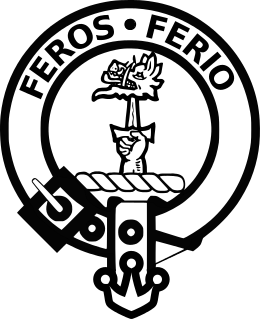 W
WClan Chisholm is a Highland Scottish clan.
 W
WClan Lockhart is a Lowland Scottish clan.
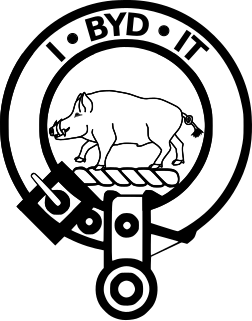 W
WClan Nesbitt is a Scottish clan of the Scottish Borders that is recognised by the Lord Lyon King of Arms.
 W
WClan Swinton is a Lowland Scottish clan.
 W
WUrquhart is a Highland Scottish clan.
 W
WClan Gordon, also known as the House of Gordon, is a Scottish clan. The chief of the clan is the powerful Earl of Huntly, and now also the Marquess of Huntly. During the Wars of Scottish Independence in the 13th century, the Gordons supported William Wallace in the cause of independence. In the 15th century, the chiefship of the clan passed to an heiress, who married into the Seton family and her male descendants assumed the surname Gordon and continued as chiefs of the clan. The Gordons assisted in defeating the rebellion of the Earl of Douglas also in the 15th century. In the 16th century, the Gordons as Catholics feuded with their Protestant neighbors the Clan Forbes and also defeated at the Battle of Glenlivet, the Protestant Earl of Argyll. During the Wars of the Three Kingdoms of the 17th century, the Gordons supported the Royalist cause. During the Jacobite rising of 1715 the Clan Gordon was Jacobite. During the Jacobite rising of 1745, their chief, then the Duke of Gordon, pledged his support to the British-Hanoverian Government, but his clan remained Jacobite.
 W
WThe Horncastle boar's head is an early seventh-century Anglo-Saxon ornament depicting a boar that probably was once part of the crest of a helmet. It was discovered in 2002 by a metal detectorist searching in the town of Horncastle, Lincolnshire. It was reported as found treasure and acquired for £15,000 by the City and County Museum, where it is on permanent display.
 W
WClan Innes is a Highland Scottish clan. The clan is without a chief that is recognized by the Lord Lyon King of Arms; therefore it can be considered an armigerous clan. The clan takes its name from the lands of Innes in Moray, Scotland. Additionally, to avoid confusion - Clan Innes is not associated with Clan MacInnes which hails from Argyle and the western Isles.
 W
WLegio I Italica was a legion of the Imperial Roman army founded by emperor Nero on September 22, 66. The epithet Italica is a reference to the Italian origin of its first recruits. There are still records of the I Italica on the Danube border at the beginning of the 5th century. The emblem of the legion was a boar.
 W
WLegio X Fretensis was a legion of the Imperial Roman army. It was founded by the young Gaius Octavius in 41/40 BC to fight during the period of civil war that started the dissolution of the Roman Republic. X Fretensis is then recorded to have existed at least until the 410s.
 W
WLegio XX Valeria Victrix, in English Twentieth Victorious Valeria Legion was a legion of the Imperial Roman army.
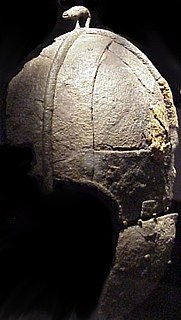 W
WThe Pioneer Helmet is a boar-crested Anglo-Saxon helmet from the late seventh century found in Wollaston, Northamptonshire, United Kingdom. It was discovered during a March 1997 excavation before the land was to be mined for gravel and was part of the grave of a young man. Other objects in the grave, such as a hanging bowl and a pattern welded sword, suggest that it was the burial mound of a high-status warrior.
 W
WThe Saubannerzug was a military campaign of irregular Swiss forces during the Fasnacht period of the year 1477, in the aftermath of the Battle of Nancy. It consisted of disgruntled men-at-arms from Central Switzerland who moved towards Geneva to enforce the payment of a sum of 24,000 Gulden owed to the Old Swiss Confederacy as ransom to escape looting (Brandschatz).
The Coat of arms of Triballia is a historical coat of arms attributed to medieval Serbia by various armorials, and is today depicted in several Serbian municipality coat of arms in Šumadija. The motif is of a severed wild boar's head with an arrow in its mouth or through its head.
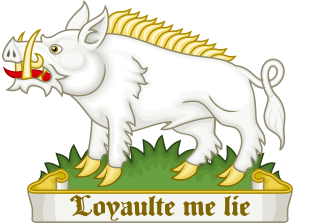 W
WThe White Boar was the personal device or badge of the English King Richard III of England, and is an early instance of the use of boars in heraldry.